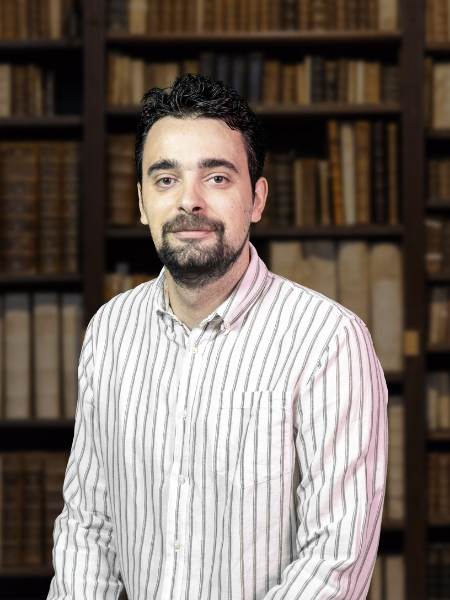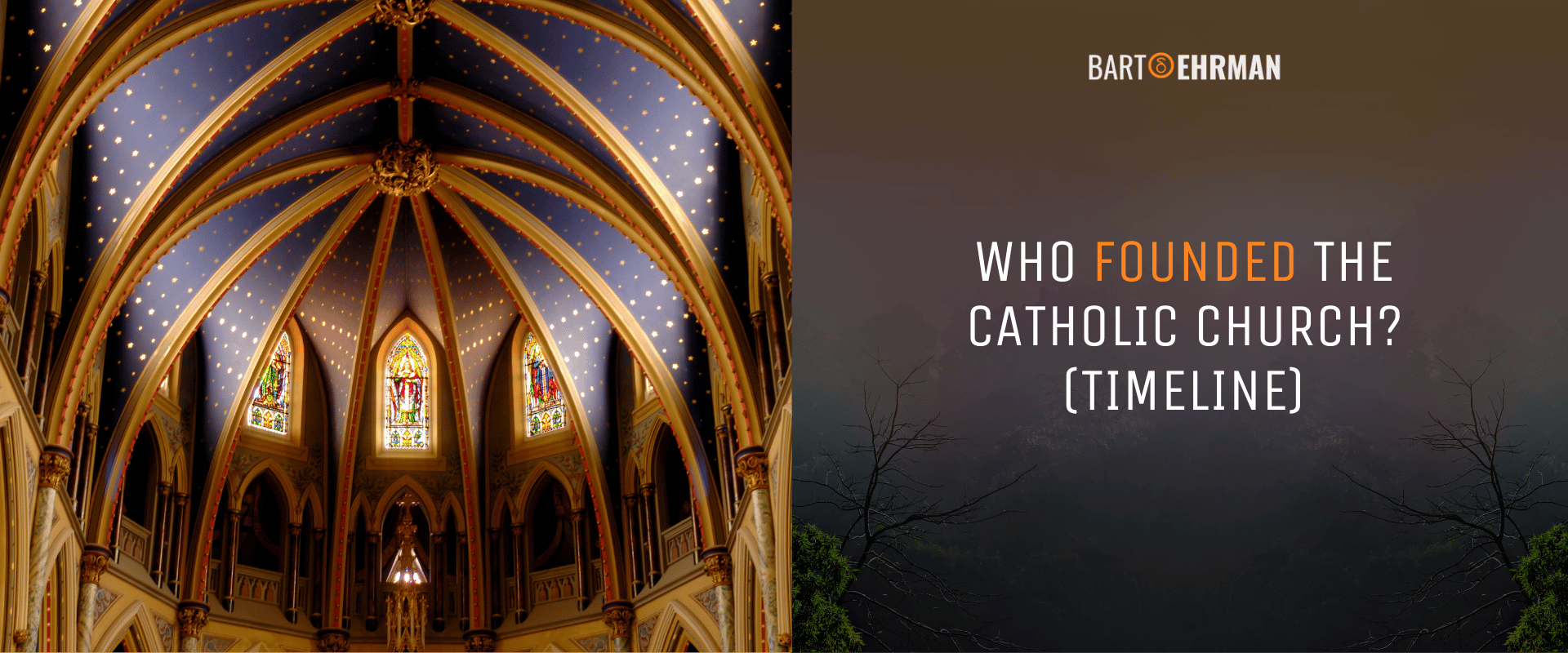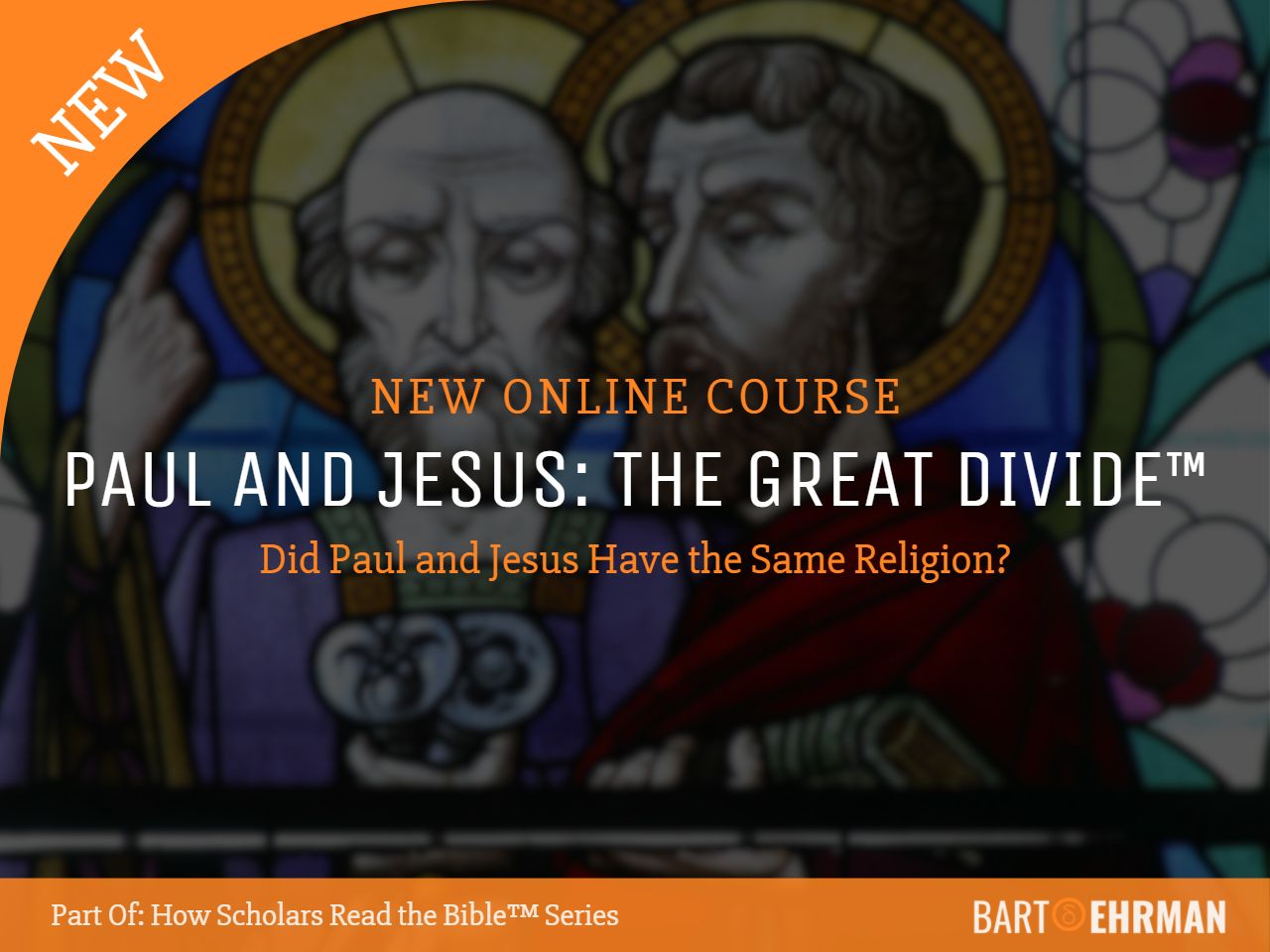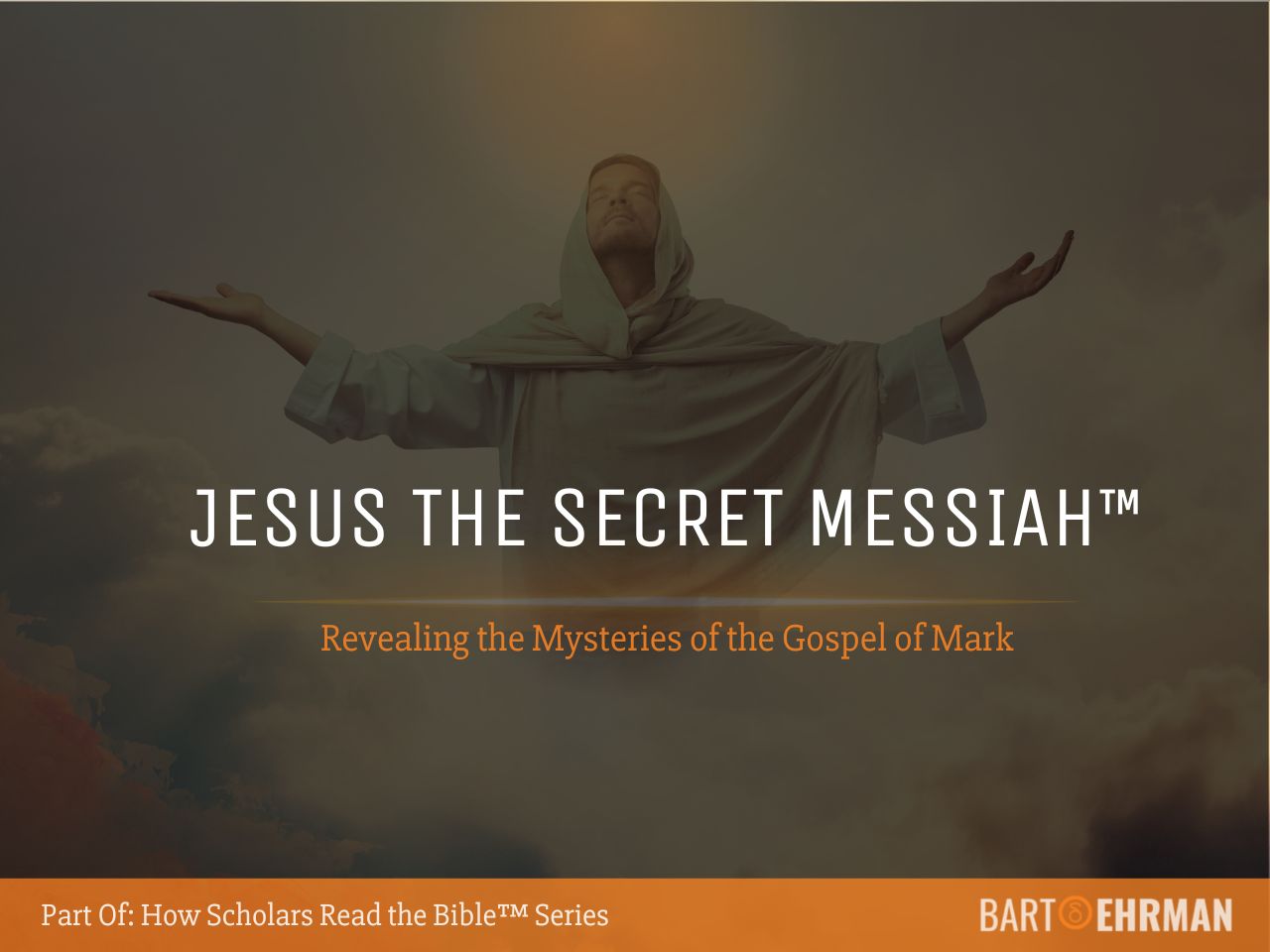Who Founded the Catholic Church? (TIMELINE)

Written by Marko Marina, Ph.D.
Author | Historian
Author | Historian | BE Contributor
Verified! See our guidelines
Verified! See our editorial guidelines
Date written: March 21st, 2025
Disclaimer: The views and opinions expressed in this article belong to the author and do not necessarily match my own. - Dr. Bart D. Ehrman
Two years ago, standing in front of the magnificent Basilica of St. Peter in Vatican City, as a historian, I couldn't evade a particular question: Who founded the Catholic Church? Was it Jesus himself? Or, perhaps, Peter — the very apostle after whom this impressive basilica is named?
Such thoughts, standing at the heart of Catholicism, seemed inevitable. Millions of Catholics worldwide hold firmly to the belief that their Church traces directly back to the historical Jesus, with Peter appointed as the first bishop, a lineage claimed unbroken for nearly two millennia.
Yet, stepping back from theological beliefs and traditions, from a strictly historical perspective, the answer proves far more complex and nuanced.
To truly understand the historical roots of the Catholic Church, we must first examine the earliest decades after Jesus' crucifixion, beginning with the conviction among his followers that he had risen from the dead.
In this article, we'll trace these crucial historical developments step by step. We'll start by examining how Christianity grew and spread following Jesus’ crucifixion, explore its early expansion into Rome, investigate how a distinct hierarchy of leadership emerged there, and ultimately examine how the papacy rose to prominence.
By understanding these historical roots, we can better comprehend the fascinating complexities behind the formation of one of the world’s oldest and most influential religious institutions.
Before we delve into the question “Who founded the Catholic Church?”, there's another exciting opportunity I simply must share with you!
Dr. Bart D. Ehrman has a fascinating course titled Paul and Jesus: The Great Divide. In this engaging and insightful course, Dr. Ehrman explores two of the most pivotal figures in Christian history – revealing striking similarities, profound differences, and how their contrasting messages shaped Christianity as we know it today. If you're curious about the historical origins of the Christian religion, this course is an absolute must!

Who Founded the Catholic Church: From Crucifixion to the First Community
Who founded the Roman Catholic Church? In his book L'Évangile et l'Église (The Gospel and the Church), French biblical scholar Alfred Loisy famously declared, “Jésus annonçait le Royaume, et c'est l'Église qui est venue” (“Jesus proclaimed the Kingdom, and it was the Church that arrived”).
(Affiliate Disclaimer: We may earn commissions on products you purchase through this page at no additional cost to you. Thank you for supporting our site!)
This provocative statement, which ultimately earned Loisy excommunication and significant outrage, raises a crucial historical question: Did Jesus himself envision the highly structured Church we know today? The short answer, historically speaking, is probably not.
Jesus preached about the imminent coming of God's Kingdom but never about founding a highly institutionalized religion.
Yet, within mere decades after Jesus’ crucifixion, precisely such an institution began to form, driven by a belief that set Jesus' followers apart from other Jewish sects: The conviction that he had been raised from the dead.
Without this foundational belief, Jesus might have been remembered merely as one of many messianic preachers who came and went in first-century Palestine, leaving no lasting religious legacy.
Initially, the community of believers was modest in size and centered exclusively in Jerusalem. According to the Acts of the Apostles, shortly after Jesus’ ascension into heaven, this first Christian community numbered approximately 120 followers — all Jews who remained in Jerusalem.
As Thomas Bokenkotter notes, “For a time the Church remained completely Jewish, a sect within Israel of those who believed in the resurrection of Jesus and regarded him as the promised Messiah who was about to come again to definitively establish the reign of God.”
At this early stage, there would have been little need for formal organization or elaborate hierarchy. The term “church” itself could be somewhat misleading to modern readers, as the original Greek term ekklesia simply meant an “assembly” or “community,” lacking any developed institutional structure.
Still, even at these humble beginnings, elements were already emerging that would profoundly shape future Christian identity and worship. Jesus' life and death provided pivotal symbolic acts that his followers soon ritualized. His final meal with his disciples became the foundation for the Eucharist, a central act of Christian worship commemorating his sacrifice.
Likewise, the Incarnation (the belief that God became flesh in Jesus) is powerfully proclaimed at the very beginning of the Gospel of John, which set theological cornerstones upon which the church would later build.
Returning to Loisy's provocative insight, it seems historically accurate that Jesus himself likely never envisioned the structured Church that would emerge centuries later. Nonetheless, the great mysteries surrounding Jesus’ life, death, and especially his resurrection profoundly shaped how his earliest followers understood him and themselves.
Thus, from the humble beginnings of a small Jewish community in Jerusalem, driven by faith in the resurrection, emerged a movement that would gradually evolve into one of history's most influential institutions: The Catholic Church. How did that happen exactly? Let’s take a look!
Who Created the Catholic Church: Timeline
Before we explore in detail the gradual emergence of the Catholic Church following Jesus' death, we decided to craft a clear timeline highlighting some pivotal moments. (You're welcome! We know timelines are awesome — almost as awesome as our readers!)
Year(s) | Key Event(s) |
|---|---|
C. 30-35. C.E. | Jesus’ death and the emergence of the belief in his resurrection. |
C. 40-45 C.E. | The establishment of the first community of Jesus’ followers in Rome (the exact founder is unknown). |
C. 49-51 C.E. | Council of Jerusalem. Gentiles were “officially” admitted without circumcision. |
C. 64-76 C.E. | The alleged martyrdom of Peter and Paul in Rome. |
C. 110 C.E. | Ignatius of Antioch was the first to use the phrase “Catholic Church.” |
311 C.E. | Galerius issued the Edict of Sardica, making Christianity a legally recognized religion. |
312 C.E. | Conversion of Constantine |
C. 384-399 C.E. | Bishop Siricius of Rome became the first Roman bishop consistently called “Pope.” |
451 C.E. | The Council of Chalcedon defines key doctrines; Pope Leo the Great significantly strengthens papal authority. |
Who Founded the Catholic Church: From Jerusalem to Rome
The Book of Acts suggests, almost certainly with idealization, that the earliest Christian community in Jerusalem shared their possessions, living in harmony.
Even if somewhat romanticized, this portrayal reveals that early followers of Jesus (more accurately described historically as Jewish followers of Jesus) aimed at communal solidarity.
However, idealization aside, Acts does give us valuable insights into conflicts within this nascent community. It explicitly mentions tensions between Jewish followers who were Hellenized, speaking Greek and adopting Greek customs, and those who remained culturally Jewish and spoke Aramaic.
The greatest controversy that arose in the early decades after Jesus' crucifixion was whether Gentiles could become full members of the community without first being circumcised and committing themselves to follow Jewish law.
It was at Antioch, one of the earliest centers of Christianity outside Jerusalem, that this crucial issue came dramatically to the fore.
There, the followers of Jesus first preached openly to Gentiles and dared to baptize them without requiring circumcision or adherence to Mosaic Law. As a result, a more inclusive, 'liberal' approach gradually emerged, welcoming Gentiles into the community without insisting they become fully Jewish first.
The Apostle Paul's influence proved decisive at precisely this juncture. As James Hitchcock notes, “Observance of the Law of Moses was the essence of Judaism, but Paul made a radical break with that tradition, dismissing 'the Law' as a barrier that Christ had broken down, thereby giving man a new spiritual freedom.”
In doing so, Paul opened Christianity to the broader Greco-Roman world, embracing a universalistic approach that dovetailed perfectly with the Church's missionary impulse — a missionary fervor unique in the ancient religious landscape, as historian Martin Goodman has convincingly shown.
Despite these rapid theological developments, early Christian communities lacked any highly structured system of governance.
As Hans von Campenhausen illustrates in his study, Ecclesiastical Authority and Spiritual Power in the Church of the First Three Centuries, Paul's letters reveal groups organized rather loosely, without sharply defined roles. Leadership was often charismatic, based on personal gifts and spiritual authority rather than formal hierarchies.
By the end of the first century, however, we start seeing a more structured leadership emerging: the so-called Pastoral Epistles (1-2 Timothy and Titus) explicitly reference “bishops” (episkopoi) and “presbyters” (elders), indicating an early phase of organizational structure emerging within these scattered communities.
In the early second century, these roles developed further, eventually giving rise to the model scholars call “monoepiscopacy,” the presence of a single bishop presiding over the community, supported by a collective of presbyters.
Ignatius of Antioch played a crucial role in promoting this hierarchical structure. Writing during his journey to martyrdom around 110 CE, Ignatius insisted that unity and doctrinal purity required a strong bishop overseeing a distinct and structured church community.
Indeed, as Christianity expanded, bishops increasingly became central authorities in their local communities, shaping beliefs and enforcing orthodoxy.
Remarkably, it was also Ignatius who first explicitly used the phrase “Catholic Church” (ekklesia katholike), meaning something universal or “according to the whole.” At this early stage, the term didn’t indicate a single centralized institution but rather a unified, translocal community of believers.
Yet, as Paula Fredriksen, referring to 2nd century Christianity, insightfully notes, “A unified translocal church, in short, was a notion created not by social reality but by the demands of rhetoric – my side, since true, is uniform; yours, false, must therefore be pluriform.”
In other words, the very idea of a universal (or “Catholic”) church emerged as a rhetorical strategy, designed precisely to counteract the growing diversity within second-century Christianity, particularly as new movements like Gnosticism challenged the authority and teachings of communities that would eventually label themselves “orthodox.”
Thus, paradoxically, it was precisely the proliferation of diverse interpretations — later labeled “heresies” — that accelerated the institutionalization of Christian leadership, organization, and doctrine.
The designation “Catholic Church,” coined by Ignatius, reflected an aspiration more than reality — an attempt to establish a unified identity amid the striking diversity of second-century Christianity.
It marked the initial steps toward forming what scholars today would call the “Catholic Church.” The crucial period, however, only came with the conversion of the Emperor Constantine. It was during the 4th and 5th centuries that the Catholic Church solidified its doctrines, practices, and hierarchy.
But before we turn our attention to the post-Constantine Church, let’s step back and take a brief look at the beginnings of Christianity in Rome.
The Emergence and the Development of Christianity in Rome
Who started the Catholic Church? Catholics traditionally trace the origins of the papal office in Rome directly back to Saint Peter, although historically, it remains almost impossible to establish a clear lineage.
Peter probably traveled to Rome, and ancient tradition holds that he died there during Nero's persecutions around 64 C.E. But, notably, Peter didn’t found the Christian community in Rome, and we do not know exactly who did.
The earliest phase of Roman Christianity, as Peter Lampe notes, remains “shrouded in haze.” According to Lampe, Christianity likely entered Rome through established trade routes linking the eastern Mediterranean to Italy, particularly the critical trade corridor connecting Puteoli with Rome itself.
The earliest followers of Jesus in the city were probably Jewish Christians or “God-fearers” associated with Rome’s synagogue communities rather than converts made by direct apostolic activity.
The earliest solid evidence of Christians in Rome coincides with conflicts in the 40s C.E. within Jewish synagogues over a figure Suetonius identifies as “Chrestus.”
This turmoil prompted Emperor Claudius to expel from Rome key Jewish figures involved, an event scholars usually date around 49 C.E. Aquila and Priscilla, prominent early Christians who later appear in Paul's letters, were among those expelled, confirming Christianity’s early and controversial presence within Rome’s Jewish communities.
Over the next century, the initially informal and loosely connected Roman Christian communities developed increasingly defined leadership structures.
By the close of the 2nd century, communities had become markedly hierarchical. Bishops in major urban centers (Rome, Antioch, Alexandria) held considerable authority, surpassing the influence of bishops in smaller surrounding towns and paving the way for the concept of metropolitan bishopric.
Rome’s prominence among these bishoprics emerged not merely through ecclesiastical administration but also due to powerful theological and historical rhetoric. Central to this rhetoric was the tradition, well-established by the late second century, that both Paul and Peter had died in Rome. No other city in the Roman Empire could argue that!
Irenaeus of Lyon particularly emphasized this claim, arguing that Rome’s church represented the ultimate model of fidelity due to the direct apostolic lineage of its bishops.
While contemporary scholars question the historical veracity of Irenaeus' apostolic succession and generally agree that Peter almost certainly wasn’t Rome’s first bishop, the rhetorical power of this tradition permanently shaped Christianity's collective memory and contributed significantly to Rome's ecclesiastical preeminence.
Finally, Rome’s religious prominence took on political power in the wake of Constantine’s conversion to Christianity in the 4th century, when the organizational system of the Catholic Church was firmly based, giving rise to the Church we know today.

From Bishop to Pope: The Rise of Papacy and the Catholic Church
Moreover, this lay benefactor and champion of the faith assumed, modestly but without hesitation, when facing 'his brothers the bishops,' the unprecedented, unclassifiable, and self-proclaimed role of a kind of president of the Church. (my translation)
This description by French historian Paul Veyne neatly captures the historical significance of Emperor Constantine's conversion. Indeed, Constantine's embrace of Christianity provided the Catholic Church with crucial political backing and, in times of crisis, even military support.
His conversion marked the beginning of a profound transformation: The Church transitioned from a persecuted minority to an openly imperially supported institution.
The fourth and fifth centuries, shaped decisively by imperial patronage, were vital in the development of the Catholic Church's foundational structures, practices, and doctrines. These were centuries marked by intense theological debates concerning the nature of Christ, the Trinity, and the precise relationship between Christ’s humanity and divinity.
Such issues were central to four pivotal ecumenical councils convened between 325 and 451 — Nicaea (325), Constantinople (381), Ephesus (431), and Chalcedon (451). These councils had tremendous and lasting influence, shaping theological orthodoxy for most Christian traditions.
But who founded the Catholic Church as we know it institutionally? Historically speaking, the answer lies less in a single person or moment and more in a gradual institutional evolution spanning centuries.
Yet one figure stands out as pivotal during this period: the Bishop of Rome. The rise of the papacy (initially simply the Roman episcopate) emerged gradually from the late third century onward. By the late 4th century, the title “pope” (papa), meaning “father,” was being used regularly for certain bishops, most notably the bishop of Rome.
The earliest known Roman bishop consistently addressed as “pope” was Siricius (384-399 C.E.). Siricius not only embraced the title but used it explicitly to assert authority, setting precedents for later claims to universal jurisdiction within the Church.
The prominence of the Roman papacy significantly increased during the 5th century, driven in part by Rome’s symbolic prestige as the supposed final resting place of apostles Peter and Paul. Bishops of Rome (now clearly "popes") actively took part in theological controversies, doctrinal definitions, and administrative oversight across wide geographical areas.
Pope Leo I, known to history as Leo the Great (440-461), stands out as an exceptional example. Leo vigorously promoted papal primacy and explicitly articulated Rome’s theological authority in his famous Tome, a critical document read at the Council of Chalcedon (451).
Perhaps the most iconic example of Pope Leo’s stature occurred in 452, when Attila the Hun threatened to sack Rome. Leo personally confronted Attila near Mantua, negotiating with enough moral and political authority that the Hun turned his armies away from the city.
Although historians debate the exact reasons Attila withdrew, Leo’s dramatic intervention vividly illustrates the papacy’s increasing prominence and prestige.
Thus, between the conversion of Constantine and the pontificate of Leo the Great, the foundations for the medieval papacy and the Catholic Church's enduring institutional structure were solidified.
The Roman papacy gradually transformed from a respected bishopric into the central authority within Western Christianity, politically influential and theologically decisive. This process of institutionalization helps us understand why the seemingly simple question, “Who founded the Catholic Church?” resists a simple historical answer.
In other words, the Catholic Church as we know it wasn’t the creation of any single founder but the outcome of centuries of theological debate, institutional growth, political influence, and historical circumstance. To put it bluntly, there is no single founder of the first Catholic Church.
Conclusion
It was more than 150 years ago that Alfred Loisy stirred controversy and found himself expelled from the Catholic Church for asserting that the historical Jesus never intended to create a structured community that would last 2,000 years.
Yet, history unfolded precisely in that direction — though certainly not in a straightforward manner. Throughout my school years, religious education classes taught me the common view that the Catholic Church traces directly back to the apostle Peter, purportedly selected by Jesus himself to be the head of the new community.
However, as a historian of early Christianity, I now understand that Loisy was much closer to the truth than my high school teacher.
Ultimately, the question “Who founded the Catholic Church?” can’t be answered by pointing to a single figure or moment. Instead, the Catholic Church emerged gradually from centuries of complex interactions involving theological disputes, institutional evolution, charismatic authority, and political power.
In other words, the Catholic Church as we know it today wasn’t the vision of one founder but the cumulative product of historical circumstances, human decisions, and profound religious convictions that unfolded over several centuries.


